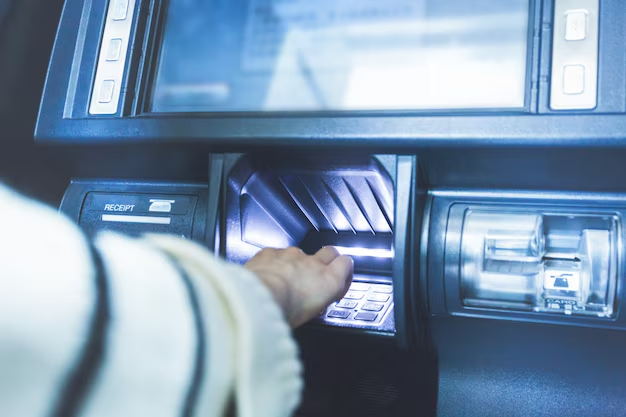Can You Withdraw Cash from an ATM Using Your Credit Card? Exploring the Possibilities and Pitfalls
In today's fast-paced world of digital payments, credit cards have become indispensable for many. They offer convenience, rewards, and often protection against fraud. But what happens when you're caught without cash and an urgent need for tangible currency arises? Can a credit card come to the rescue at a cash machine? Let's delve into this question, unravel potential pitfalls, provide handy tips, and ensure you're making financially sound decisions.
Understanding Cash Advances: The Basics
When using a credit card at an ATM, you're essentially taking out a cash advance. This isn't the same as withdrawing money from a debit card; instead, it's a loan from your credit card company that allows you to access a portion of your credit limit in cash.
Costs and Fees
Using your credit card for cash advances can be expensive:
- Interest Rates: Cash advances often come with higher interest rates compared to regular purchases. Additionally, interest starts accumulating immediately, with no grace period.
- Transaction Fees: Each cash advance transaction usually incurs a fee, typically a percentage of the amount withdrawn or a flat rate, whichever is higher.
- ATM Fees: On top of credit card fees, ATM operators may charge additional fees, adding to your overall cost.
Credit Limit Considerations
Not all of your credit limit is available for cash advances:
- Cash Advance Limit: Typically, this is a portion of your total credit limit. Check your credit card statement or contact your issuer for this information.
The Process: How to Use a Credit Card at an ATM
If you find yourself needing to use a credit card at an ATM, here’s a step-by-step guide:
- Locate an ATM: Prefer using your credit card issuer’s ATM to potentially avoid additional fees.
- Insert Your Card: Follow the prompts on the screen.
- Select ‘Cash Advance’: Choose this option when prompted.
- Enter the Amount: Input the amount you wish to withdraw, ensuring it’s within your cash advance limit.
- Complete the Transaction: Confirm the transaction and withdraw your cash.
Be mindful of the limitations and fees before proceeding with a cash advance.
Alternatives to Cash Advances
Before opting for a cash advance, consider these alternatives:
Use Your Debit Card
If available, using a debit card is typically more cost-effective for cash withdrawals, as it draws directly from your bank account without additional interest.
Peer-to-Peer Payment Apps
Modern financial technology offers various peer-to-peer payment platforms that allow easy transfer of funds directly to individuals without needing cash.
Credit Card Convenience Checks
Some issuers provide convenience checks that allow you to write checks from your credit card account, which might have favorable terms compared to cash advances.
Short-Term Personal Loans
In unexpected situations, a short-term personal loan from a bank or financial institution might offer better terms than a cash advance.
Major Pitfalls to Avoid
When considering cash advances, be aware of potential pitfalls:
High Interest and Fees
Unplanned cash advances can quickly escalate your debt due to high interest rates and fees. Always evaluate if the urgency justifies the cost.
Impact on Credit Score
Regular cash advances can affect your credit utilization ratio, potentially impacting your credit score. Financial experts recommend keeping this ratio low to preserve credit health.
Lack of Rewards and Benefits
Unlike regular purchases, cash advances typically don’t earn rewards points or other benefits associated with credit card spending.
Strategies for Responsible Use
If a cash advance is unavoidable, employ these strategies to minimize its impact:
Keep It Small and Essential
Only withdraw what's necessary to avoid excessive fees and interest.
Pay Back Promptly
Consider the debt as short-term. Pay it off as soon as possible to minimize interest accumulation.
Explore Other Cards
If suitable, some cards may have lower cash advance fees or interest rates than others. Review your options.
Points to Ponder Before Proceeding
Here's a quick guide to help you weigh your options before proceeding with a cash advance:
- 💰 Compare Costs: Assess the total cost, including potential interest, transaction, and ATM fees.
- 📊 Review Alternatives: Consider other methods of securing funds that are less costly.
- 🔍 Evaluate Impact: Understand how this decision fits into your larger financial health and credit score considerations.
Conclusion: Make Informed Financial Decisions
Deciding to use a credit card at a cash machine for a cash advance is not a decision to be made lightly. While it offers a quick fix in financially pressing situations, the associated costs and potential impact on your financial wellbeing necessitate careful consideration.
Being equipped with knowledge about cash advances, their costs, and potential alternatives places you in a powerful position to make the most informed choice for your current and future financial well-being. Always aim to balance immediate needs with long-term financial health, ensuring that any decision made today doesn't lead to unexpected challenges down the line.

Related Topics
- a Credit Card
- Am Eagle Credit Card
- Are Airline Credit Cards Worth It
- Are Credit Card Points Taxable
- Are Credit Card Rewards Taxable
- Can a Credit Card Company Sue You
- Can a Debit Card Be Used As a Credit Card
- Can a Money Order Be Paid With a Credit Card
- Can a Secured Credit Card Build Credit
- Can Credit Card Companies Garnish Your Wages